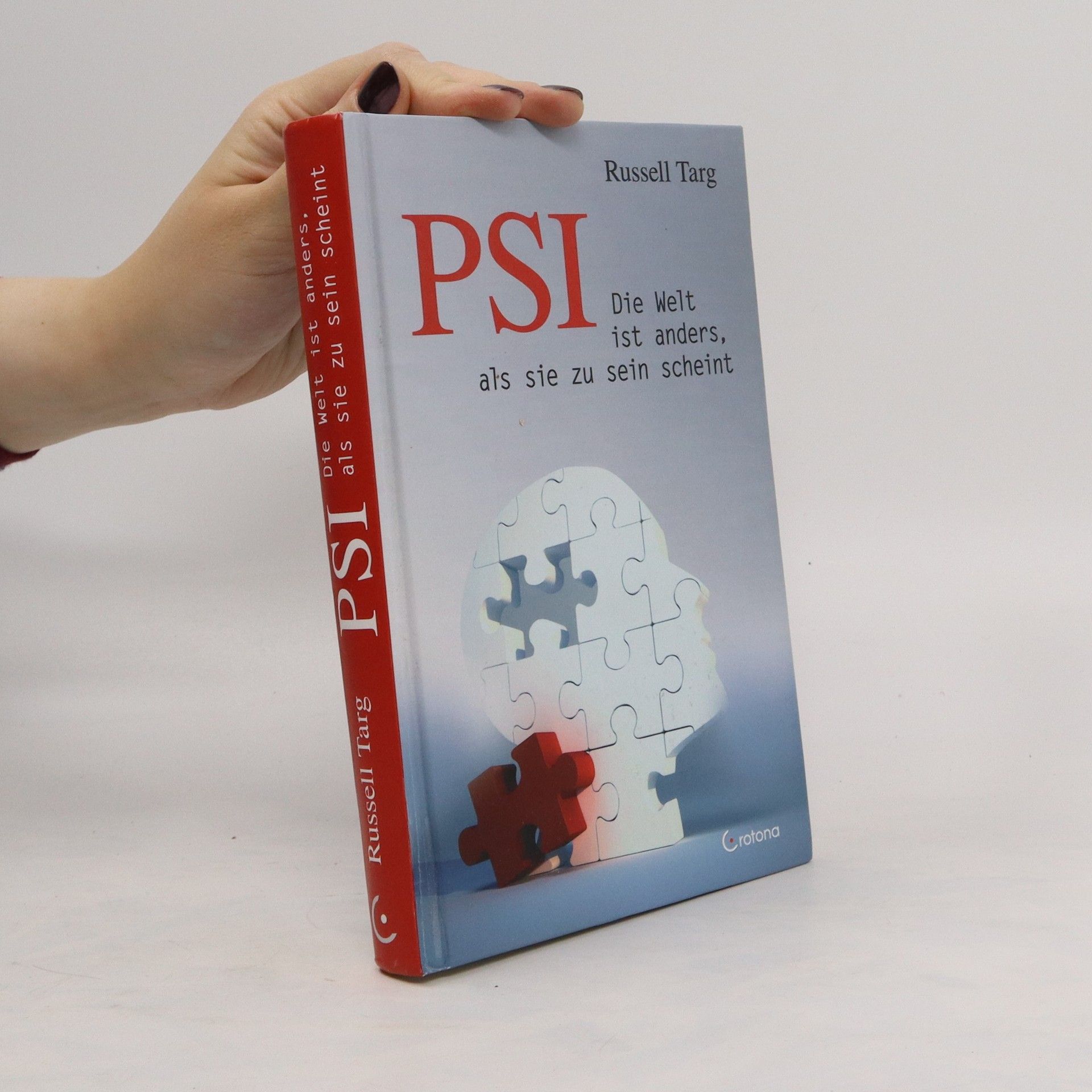Third Eye Spies
- 176bladzijden
- 7 uur lezen
Russell Targ is een Amerikaanse natuurkundige en auteur wiens werk zich verdiept in de onontgonnen gebieden van de geest en perceptie. Hij was medeoprichter van een belangrijk onderzoeksprogramma gericht op het onderzoeken van paranormale vermogens, met name het fenomeen 'remote viewing', en het verkennen van hun praktische toepassingen. Zijn onderzoek, vaak in samenwerking met vooraanstaande instellingen, verlegt de grenzen van wat we begrijpen over menselijk bewustzijn. Targ's geschriften en lezingen bieden een boeiende verkenning van een domein waar wetenschap het onverklaarbare ontmoet, en dagen lezers uit om de grenzen van het mogelijke te heroverwegen.





J.W. Dunne (1866-1949) was an accomplished English aeronautical engineer and a designer of Britian's early military aircraft. His An Experiment with Time, first published in 1927, sparked a great deal of scientific interest in--and controversy about--his new model of multidimensional time.A series of strange, troubling precognitive dreams (including a vision of the then future catastrophic eruption of Mt. Pelee on the island of Martininque in 1902) led Dunne to re-evaluate the meaning and significance of dreams. Could dreams be a blend of memories of past and future events? What was most upsetting about his dreams was that they contradicted the accepted model of time as a series of events flowing only one way: into the future. What if time wasn't like that at all?All of this prompted Dunne to think about time in an entirely new way. To do this, Dunne made, as he put it,"an extremely cautious" investigation in a "rather novel direction." He wanted to outline a provable way of accounting for multiple dimensions and precognition, that is, seeing events before they happen. The result was a challenging scientific theory of the "Infinite Regress," in which time, consciousness, and the universe are seen as serial, existing in four dimensions.Astonishingly, Dunne's proposed model of time accounts for many of life's mysteries: the nature and purpose of dreams, how prophecy works, the immortality of the soul, and the existence of the all-seeing "general observer," the "Witness" behind consciousness (what is now commonly called the Higher Self).Here in print again is the book English playwright and novelist J.B. Priestley called "one of the most fascinating, most curious, and perhaps the most important books of this age."
Die Welt ist anders, als sie zu sein scheint
Russell Targ ist Physiker an der Stanford University und war einer der leitenden NASA-Ingenieure auf dem Gebiet der Laser-Technik. Gleichzeitig hat er sich intensiv mit den überzeugendsten wissenschaftlichen Versuchsexperimenten der Parapsychologie befasst und auf diesem Gebiet bahnbrechende Arbeiten veröffentlicht. Seine Forschungen führten ihn zu vier für die Naturwissenschaften revolutionären Einsichten: Nur bestimmte Aspekte des Geistes sind eine Folge physiologischer Prozesse. Bewusstsein ist ursächlich, die physische Realität ist seine Manifestation. Alle Bewusstseinsformen sind Teil eines Netzwerkes des Lebens. Einige Aspekte des Bewusstseins sind unabhängig vom Raum-Zeit-Kontinuum. Russell Targ liefert die Bausteine für das kommende Paradigma in den Naturwissenschaften. Eine grundlegende Arbeit für das neue Bewusstsein der Menschheit!